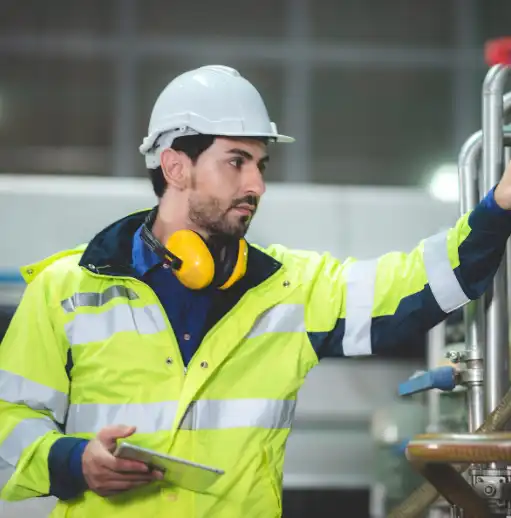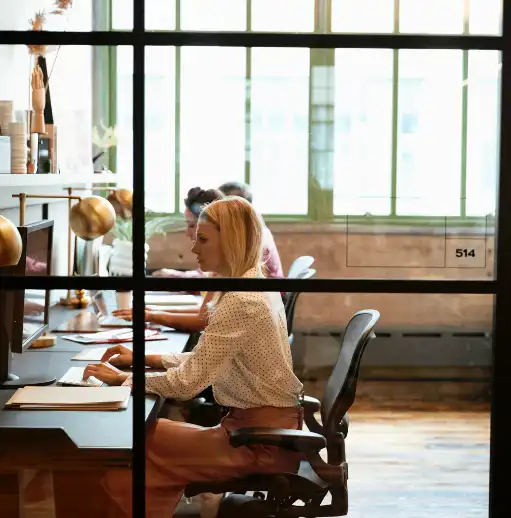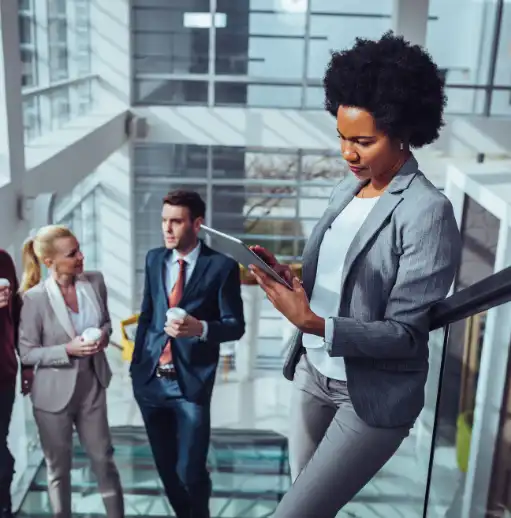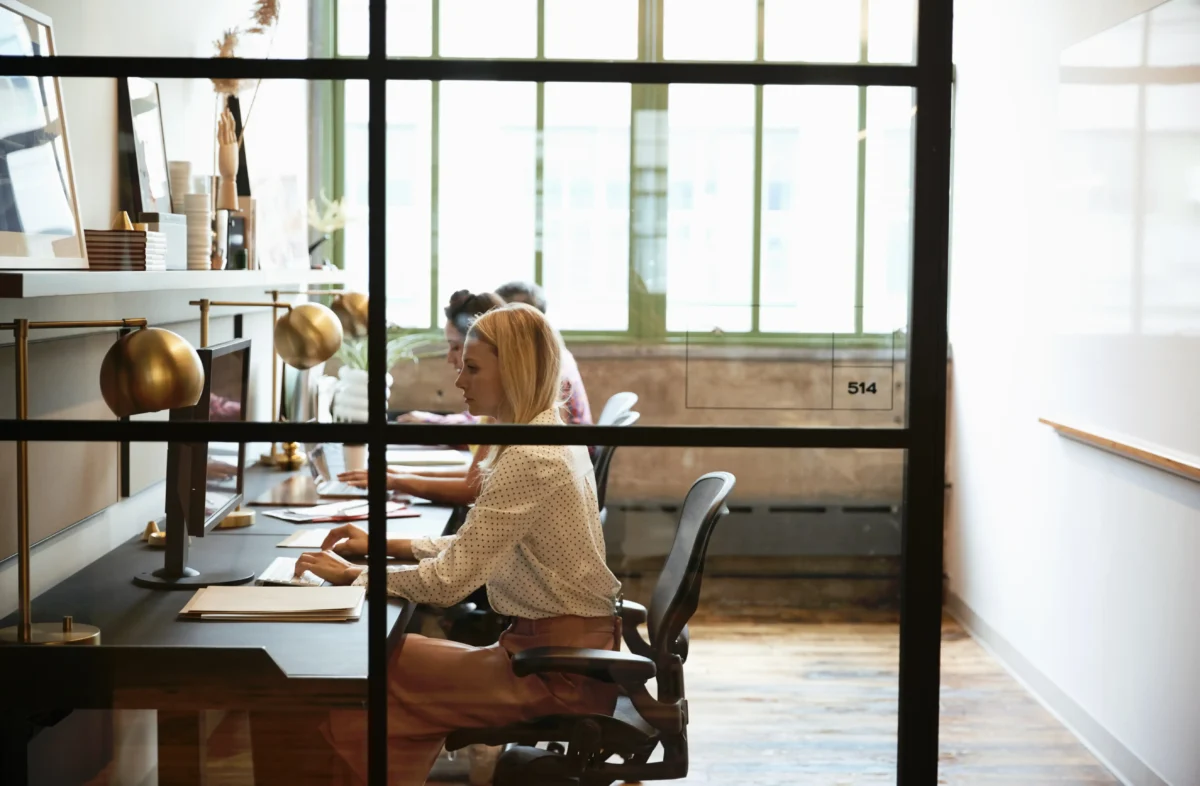
Changes in how, when, and where people work have created gaps between traditional and current expectations of what the office is and should be. But it’s inside these spaces that organizations can find opportunities to improve the employee experience and boost productivity. By adapting to new work trends and leveraging the right data, facility and workplace leaders can deliver offices that see less traffic overall but better support the connection and collaboration employees want for their well-being and need to drive the bottom line.
Hybrid workplaces: Focusing on collaborative spaces and workplace design
In the past, work was tightly tied to location. Factory workers punched in with timecards, and office staff filled rows of desks starting and ending at prearranged, standardized times. But the hybrid model supports a blend of in-office and remote work, giving employees more freedom to choose the work locations that work best for them. When they do come into the office, they’re specifically looking for what they can’t get at home.
According to Eptura’s ongoing research into work trends captured in the Workplace Index reports, employees come to the office to connect and collaborate. For heads-down, focus-dependent work, many seek the calm and quiet of the home office. But for building professional relationships and brainstorming new projects, people prefer to be in the same room.
The traditional workplace is designed to accommodate more staff than the hybrid workplace. Businesses can downsize large floor plans to accommodate smaller numbers of employees. And they can take the remaining space and reimagine it. For example, fewer cubicles and a more open floor plan allow for a fully equipped cafeteria and casual seating areas. The office can also integrate more agile workspaces such as comfortable benches and booths or even treadmills at stand-up desks.
The hybrid model impacts the physical office by designing a workplace as a social anchor for human interaction. More hybrid office layouts now include breakout areas, flexible office spaces, whether this is a café, lounge, or meeting room. Ultimately, the goal is to support the employees’ well-being and promote teamwork.
Sustainability: Natural light and making the office more energy efficient
With governments around the world creating and tracking sustainability targets, companies need to invest quickly and strategically in initiatives. There’s also growing pressure from employees who want to work for organizations with strong environmental credentials. The push for sustainability has influenced workplace design’s latest trends.
A sustainable building is much more than an office layout with recycling bins. It involves meeting new standards and having a holistic view of the well-being of building occupants. Sustainable office designs improve the quality of our water, natural light, and air. Companies can choose green appliances such as energy-efficient water coolers, vending machines, and printers. Ultimately, decreasing the greenhouse gases we generate has a positive impact on our planet.
Although it’s a big topic, sustainability can be a series of smaller steps. Instead of one large project, companies can embrace smaller ways of going green that collectively over time have a larger impact.
Companies can create sustainable offices by including:
- Upcycled furniture
- Materials with high recycled content
- LED lighting
- Paper-free policies
- Reusable coffee cups and plates
Outside certification can also be an important part of embracing sustainability and showing a commitment to employee and the planet’s well-being. BREEAM or LEED are great certifications for assessing the sustainability of buildings. Both understand that designing an environmentally responsible space improves the quality of life. After all, sustainable designs fuel our bodies, keep us connected, and inspires our best work.
Smart offices: Using technology to make physical offices more accessible
Smart offices bring technology, data, and workplace design together. Specifically, smart technology collects building data to help make informed design decisions. This includes using sensors to monitor air quality, space utilization, and natural light levels to better understand how areas are used and adjust accordingly.
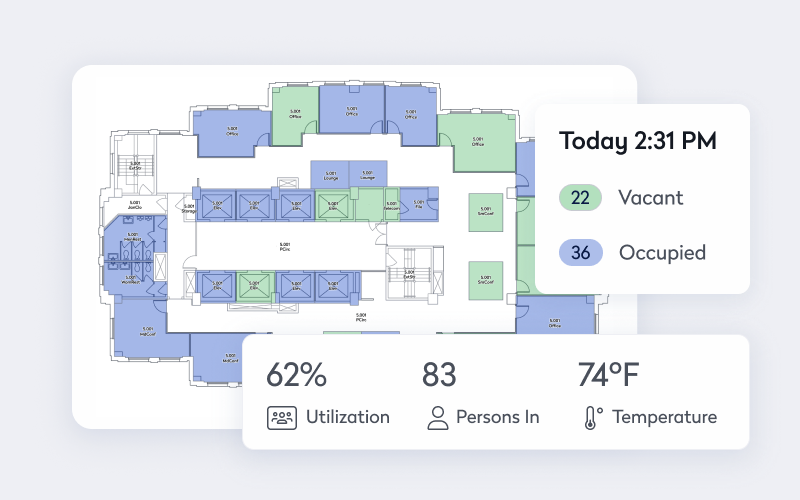
For example, a company can install human-centric smart lighting (HCL) – a system that creates lighting which mimics natural daylight. The commercial HCL constantly assesses and optimizes the office design as the business evolves. Considering HCL’s benefits, including improved employee concentration and work performance, more companies are looking to implement this new system.
Smart technology, such as desk booking, can help a facility manager determine occupancy across desks, which directly influences workplace design. This data helps decide how many desks a company should have, where the desks should be placed, and how to reimagine extra desk space. Modern office layouts reflect this with wider walkways, fewer desks, and more spaces to relax or socialize.
Modern office design: Amenities that support employee well-being
Due to remote and hybrid work, businesses have found creative ways to repurpose remaining vacant floor plates and buildings. They attempt to fight employee burnout with a modern office design.
Some professionals today struggle to find work-life balance. many lack a system of self-care, refusing to take time off and working excessive hours because they over-prioritize their work. But companies can invest in reservable amenities to counteract this issue.
Some modern offices incorporate a built-in fitness center. Employees can meet their coworkers for workouts or fitness classes to socialize and reduce stress. To combat burnout, yoga and meditation programs have been among the most popular.
Other amenities modern layouts include are:
- Drop-in daycare
- Game room
- Meditation room
With the help of a better layout design, the office can become a place that promotes self-care and boosts focus. The hybrid model supports work-life balance when the office layout is centered around the employee experience.
Modern life has changed greatly in recent years, and so have our working environments. The shift to hybrid work endures, and as more companies adapt to the new model, more offices will be re-imagined. Downsizing buildings and cutting real estate costs allow employers to invest in their staff’s well-being, while delivering spaces that maximize utilization and boost productivity. At the center of a modern office is a workplace solution that captures the data you need to design it and the flexibility employees need to get the most from it.


